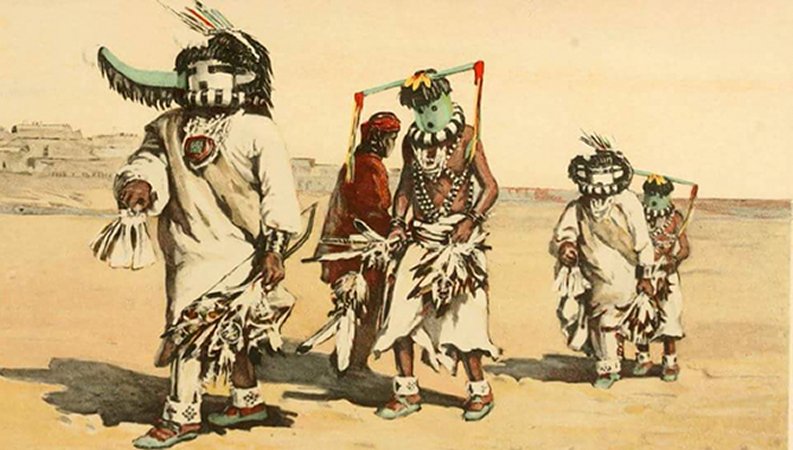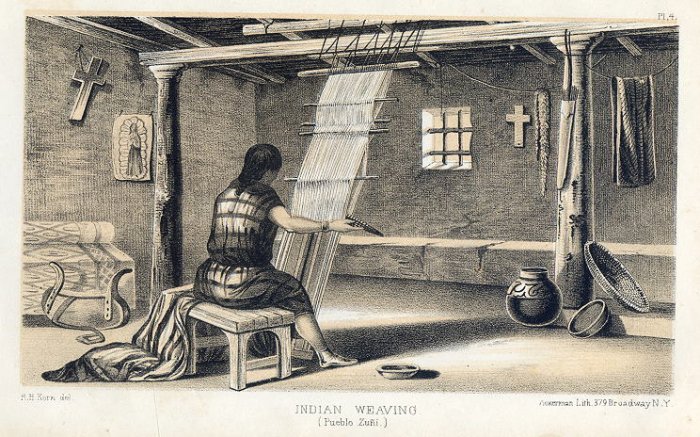Zuni Indians Bravely Fought For Their Ancient Culture, Traditions And Respect For Their Ancestors
Thalia Lightbringer - AncientPages.com - The Zuni people made beautiful things from silver and had a rich cultural tradition, but were primarily farmers. How then did these Pueblo people get mixed up with the Spanish legend of golden cities?
Their story is an interesting one, since they are one of the few tribes who managed to keep their way of life intact. What is the truth about these unique people, and how did they maintain their culture in spite of pressure from the Spanish invaders?
Zuni Rain Priests and Warriors by Internet Archive Book Images, Public Domain
Who Are The Zuni?
The Zuni are one of the Western Pueblo tribes (along with the Hopi). They are primarily based in western New Mexico near the Arizona border. They have lived in this area for thousands of years. The Zuni and Hopi both resisted the Spanish attempts to integrate them and held on to their culture and traditions to a much greater extent than the other North American tribes.
Their language is unique as well. Though the Zuni preserved their culture and language, the words we use to refer to them come from the Spanish language. "Pueblo" is Spanish for "town," and "Zuni" is what the Spanish called this tribe, though the meaning of the word is uncertain. The Zuni called themselves "A:shiwi" (Shi’wi), meaning “the flesh.”
For more about their language and an intriguing theory that Buddhist monks from Japan may have integrated with the Zuni, see: Mysterious Zuni Indians And Japanese People May Be Related – Did Buddhist Monks Reach North America In 1350?
Zuni Silver Inlaid Brooch, 1890s; By Anagoria, Credit: Wikipedia
The Zuni traditions say that they came from the area of the Grand Canyon they called "Chimik’yana’kya dey’a" (Ribbon Falls on Bright Angel Creek), which comes from the north rim wall of the Grand Canyon and flows to the Colorado River.
Before that, Zuni mythology states that they came from somewhere underground. There they lived in four great caverns they called the "Four Wombs of the World." When it became too crowded and miserable there, the people begged for a change. Then the Sun-Father, Holder of the Paths of Life, made two new humans from his own being. These two left the caverns to become the first ancestors of the Zuni people.
Zuni Culture And Traditions
The Zuni have a matrilineal society of thirteen clans, respecting the mothers and grandmothers of the tribe. They have strong ties to the land around them and their traditions express this by celebrating the natural forces around them. Their ceremonies are complex and based on belief in the Ancient Ones, a sort of ancestral worship. They may be descendants of the prehistoric Anasazi.
There are six groups with separate priesthoods devoted to the worship of different supernatural entities. One of the most well-known of their ceremonial celebrations is the Shalako Festival in early winter. This festival involves rain dancers in colorful costumes who represent the deities who bring the rains and go throughout the village blessing new homes.
Zuni Fetishes by Internet Archive Book Images, Public Domain
The Zuni are one of the tribes which have a kachina cult. Kachinas are Spirits which the pueblo cultures believed brought rain and fertility. Salt is also such an important substance to the Zuni that they have associated it with a deity.
See also:
Skidi Pawnee Indians – One Of The Best Sky Watchers Of Ancient Times And Their Star Chart
Astonishing Secrets Of Legendary Kachinas: Watchers Of The Hopi
Fremont Indians: Unique 2,500-Year-Old Forgotten Culture Of North America
The Enigma Of The ‘Ancient Ones’, The Anasazi Cliff-Dwellers Of The Southwestern United States
The Zuni Salt Lake about 60 miles south of the Zuni Pueblo is the home of the deity they call Salt Mother (Ma'lokkyattsik'I) and her husband Turquoise Man. This goddess of salt traveled around the world leaving deposits of salt wherever she rested. She gave salt to the Zuni people and instructed the priests in how to gather it. It is said that these two deities later left the people when they were bothered by people who had followed her from the seashore she used to live by. An arch in the sandstone there is believed by the Zuni to have been created when Salt Mother and Turquoise Man broke through the wall to enter the mesa when they left.
The Zuni express their traditions and stories through their art, considering it a material record which ties the past to the present. They make jewelry and do some interesting fetish carvings and paintings to express their culture and beliefs. In contrast to many other cultures, the men weave cloth and the women make the pottery.
USA, Indian Weaving (Pueblo Zuni), 1853; Source: ancestryimages.com
The Spanish Invasion And Search For Seven Cities Of Cibola
The Zuni first encountered Spanish colonizers in 1539. Fray Marcos de Niza led an expedition to the area of the Zuni pueblos after hearing rumors of wealth to be found there. Estevan, one of de Niza's men, demanded women and turquoise from the Zuni people they found there. The Zuni responded with violence, and de Niza fled. He spread tales of their cities, calling them the "Seven Cities of Cibola" and claiming they were filled with gold and treasure.
In response to this tale of treasure, Francisco Vásquez de Coronado led an expedition back to the Zuni pueblos a year later. Like de Niza, he found no gold, only resistance from the natives, and was infuriated. He didn't even find seven cities! From what we know, the Zuni had six major pueblo towns and no one is sure why de Niza reported seven.
Coronado sent out several scouting parties in search of the elusive riches. None of these expeditions paid off in treasure, but those led by García López de Cárdenas were the first Europeans to view the Grand Canyon. The men who went on this disastrous mission ended up impoverished and discouraged.
Sunrise at Grand Canyon. Credit: Wikipedia
The Zuni continued to fight the Spanish influence and pressure to change their culture and accept Christianity. The people moved to one fortified pueblo. In 1680, the Zuni were part of the Pueblo Rebellion which defeated the Spanish. They remained independent until 1691, when the Spanish took control of the area once more. Even so, the Zuni still fought against the Spanish ideas of civilization. Eventually, the Spanish were forced to make peace with them and the Zuni in New Mexico remain strong in their culture and traditions to this day.
There were never any cities of gold in the pueblo area. Perhaps these tales originated with other tribes wishing to get the Spanish to leave them alone. It has also been suggested that de Niza saw the pueblo villages at a time when the light gave them a golden tint. He was never allowed to get very close and fled immediately after contact with the Zuni.
If the Spanish had not been so greedy for gold, they may have appreciated that they did find another kind of riches, and their expedition might not have left them in poverty. If they had approached the Zuni with the intention of peaceful trade, they may have been able to at least come back with some beautiful silver jewelry and tales of a marvelous culture living in an awe-inspiring landscape.
Written by – Thalia Lightbringer – AncientPages.com Staff Writer
Copyright © AncientPages.com All rights reserved. This material may not be published, broadcast, rewritten or redistributed in whole or part without the express written permission of AncientPages.com
Expand for referencesNative American Mythology A to Z by Patricia Ann Lynch; 2004
Report of an Expedition down the Zuni and Colorado Rivers,; 1853
Annual report of the Bureau of American Ethnology to the Secretary of the Smithsonian Institution; Smithsonian Institution. Bureau of American Ethnology; 1895; Washington: U. S. Govt. Print. Off.
Zuñi fetiches by Frank Hamilton Cushing; 1883; Washington: U.S. Govt. Print. Off.
More From Ancient Pages
-
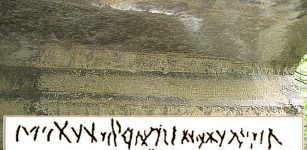 Mystery Of The Ancient Sitovo Inscription: Undeciphered Script Or Just A Natural Rock Formation?
Featured Stories | Apr 17, 2016
Mystery Of The Ancient Sitovo Inscription: Undeciphered Script Or Just A Natural Rock Formation?
Featured Stories | Apr 17, 2016 -
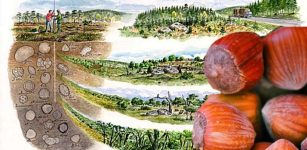 Hazelnuts -‘Time Capsule’ To Reconstruct Landscape Of Ancient Forests In Sweden
Archaeology | Mar 5, 2024
Hazelnuts -‘Time Capsule’ To Reconstruct Landscape Of Ancient Forests In Sweden
Archaeology | Mar 5, 2024 -
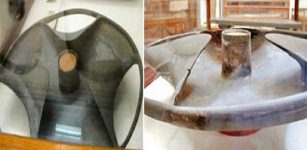 Schist Disk – Mysterious Piece Of Sophisticated Technology Could Rewrite History – Scientists Are Not Sure What They Are Dealing With
Artifacts | Jun 30, 2013
Schist Disk – Mysterious Piece Of Sophisticated Technology Could Rewrite History – Scientists Are Not Sure What They Are Dealing With
Artifacts | Jun 30, 2013 -
 Ancient Village Of Zalipie Where Flowers Are Painted On All Houses
Ancient Traditions And Customs | May 29, 2019
Ancient Village Of Zalipie Where Flowers Are Painted On All Houses
Ancient Traditions And Customs | May 29, 2019 -
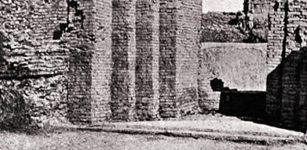 Sumerian City Of Girsu: Political, Religious Center With Large Archive Of Thousands Of Cuneiform Tablets
Civilizations | Jul 21, 2023
Sumerian City Of Girsu: Political, Religious Center With Large Archive Of Thousands Of Cuneiform Tablets
Civilizations | Jul 21, 2023 -
 Last Of The Giant Camels And Archaic Humans Lived Together In Mongolia Until 27,000 Years Ago
Fossils | Mar 24, 2022
Last Of The Giant Camels And Archaic Humans Lived Together In Mongolia Until 27,000 Years Ago
Fossils | Mar 24, 2022 -
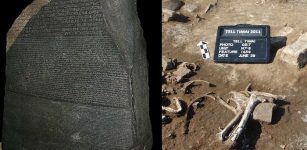 Archaeologists Dug For Evidence Of The Rosetta Stone’s Ancient Egyptian Rebellion – Here’s What They Found
Archaeology | Mar 7, 2023
Archaeologists Dug For Evidence Of The Rosetta Stone’s Ancient Egyptian Rebellion – Here’s What They Found
Archaeology | Mar 7, 2023 -
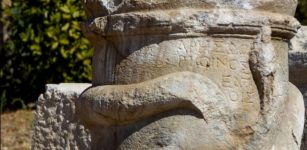 2,000-Year-Old Altar Depicting Snake Figure Unearthed In Lycian City Of Patara
Archaeology | Oct 20, 2020
2,000-Year-Old Altar Depicting Snake Figure Unearthed In Lycian City Of Patara
Archaeology | Oct 20, 2020 -
 Strange Ancient Mechanical Flying Animals – Myths Or Advanced Ancient Technology? – Part 1
Featured Stories | Mar 25, 2020
Strange Ancient Mechanical Flying Animals – Myths Or Advanced Ancient Technology? – Part 1
Featured Stories | Mar 25, 2020 -
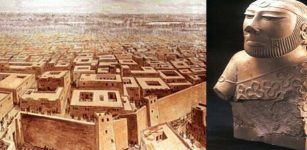 Controversial Ancient History Of Harappa And Mohenjo Daro – Advanced Indus Valley Civilization Pre-Dates Egypt’s Pharaohs And Mesopotamia
Civilizations | Apr 15, 2017
Controversial Ancient History Of Harappa And Mohenjo Daro – Advanced Indus Valley Civilization Pre-Dates Egypt’s Pharaohs And Mesopotamia
Civilizations | Apr 15, 2017 -
 Forgotten Notebook Reveals Da Vinci Understood Gravitiy Long Before Newton
Ancient Technology | Feb 22, 2023
Forgotten Notebook Reveals Da Vinci Understood Gravitiy Long Before Newton
Ancient Technology | Feb 22, 2023 -
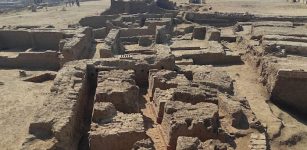 Major Discovery Of A Complete Ancient Roman City In Luxor, Egypt
Archaeology | Jan 24, 2023
Major Discovery Of A Complete Ancient Roman City In Luxor, Egypt
Archaeology | Jan 24, 2023 -
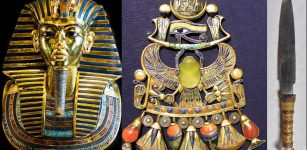 King Tut’s Cosmic Scarab Brooch And Dagger Linked To Meteorite’s Crash 28 Million Years Ago
Artifacts | Jun 17, 2021
King Tut’s Cosmic Scarab Brooch And Dagger Linked To Meteorite’s Crash 28 Million Years Ago
Artifacts | Jun 17, 2021 -
 Lemko People – European Minority That Lost Their Homeland And Still Live In Exile
Civilizations | Jan 13, 2020
Lemko People – European Minority That Lost Their Homeland And Still Live In Exile
Civilizations | Jan 13, 2020 -
 Remains at Crenshaw Site Are Local, Ancestors Of Caddo – New Study
Archaeology | Jun 15, 2023
Remains at Crenshaw Site Are Local, Ancestors Of Caddo – New Study
Archaeology | Jun 15, 2023 -
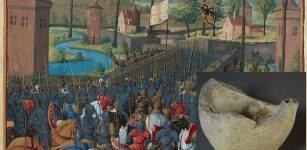 Ancient Hand Grenades: Explosive Weapons In Medieval Jerusalem During Crusades
Archaeology | Apr 26, 2022
Ancient Hand Grenades: Explosive Weapons In Medieval Jerusalem During Crusades
Archaeology | Apr 26, 2022 -
 Legendary Mount Penglai Where The Eight Immortals Reside
Chinese Mythology | Feb 20, 2018
Legendary Mount Penglai Where The Eight Immortals Reside
Chinese Mythology | Feb 20, 2018 -
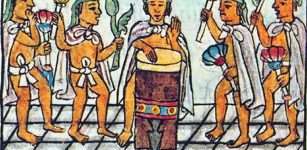 Daily Life Of Télpochcalli Students Of The Aztec Empire Was A Challenge
Ancient History Facts | Apr 20, 2020
Daily Life Of Télpochcalli Students Of The Aztec Empire Was A Challenge
Ancient History Facts | Apr 20, 2020 -
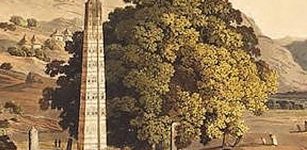 Ancient African Empires’ Impact On Migration Revealed By Genetics
Archaeology | Mar 31, 2023
Ancient African Empires’ Impact On Migration Revealed By Genetics
Archaeology | Mar 31, 2023 -
 Unique Glass Bead From The Time Of Jesus Discovered In Fire Pit In Sweden
Archaeology | Jun 17, 2017
Unique Glass Bead From The Time Of Jesus Discovered In Fire Pit In Sweden
Archaeology | Jun 17, 2017

